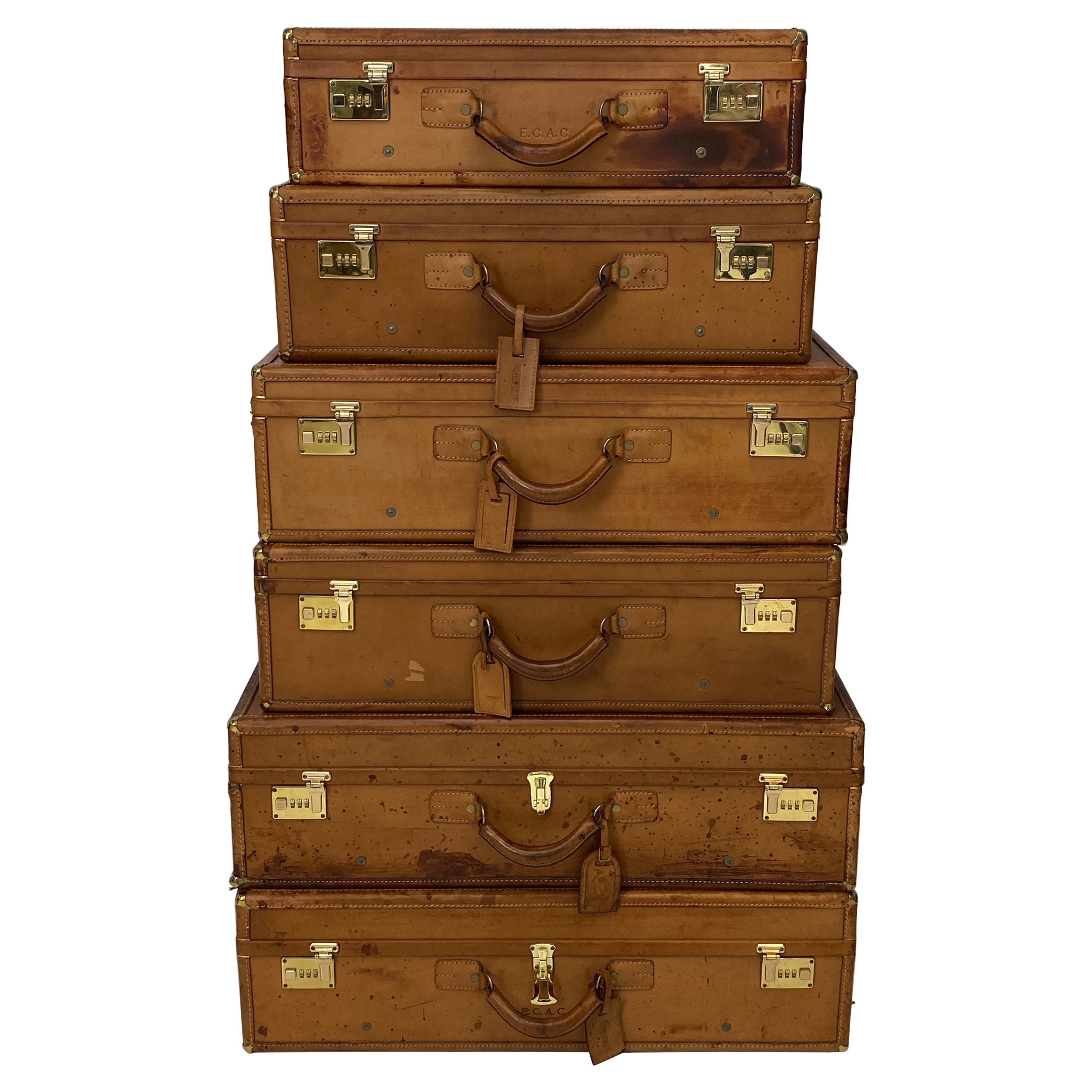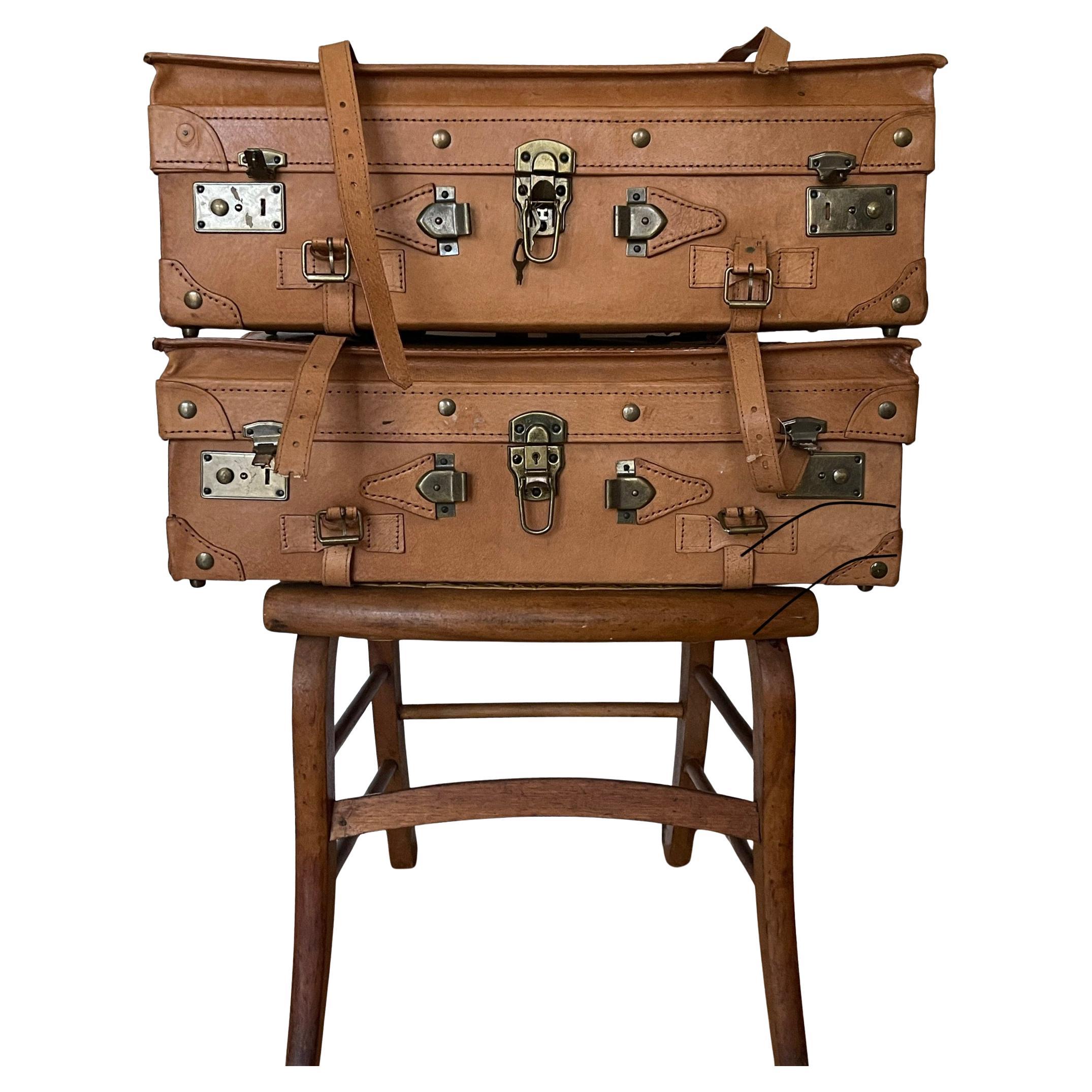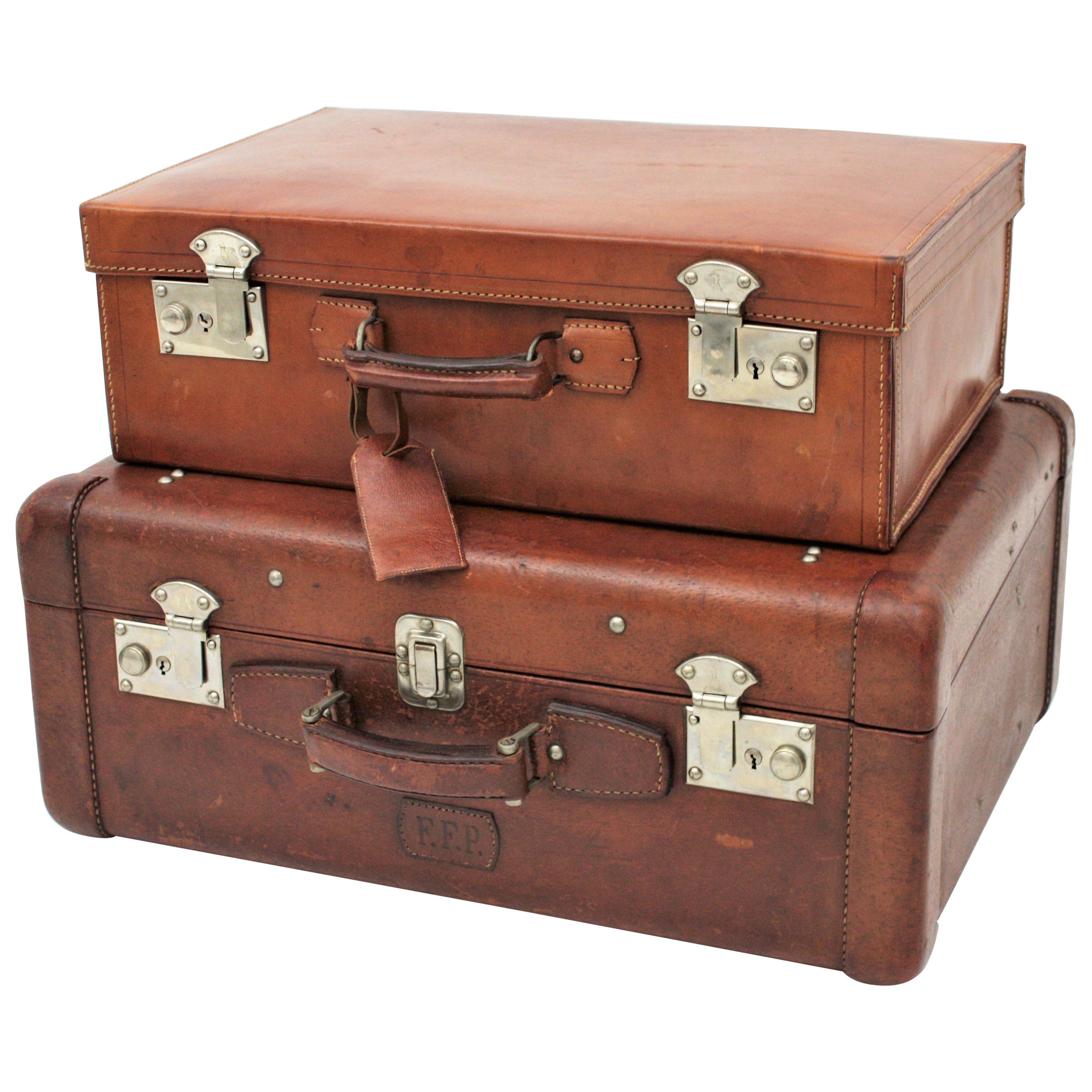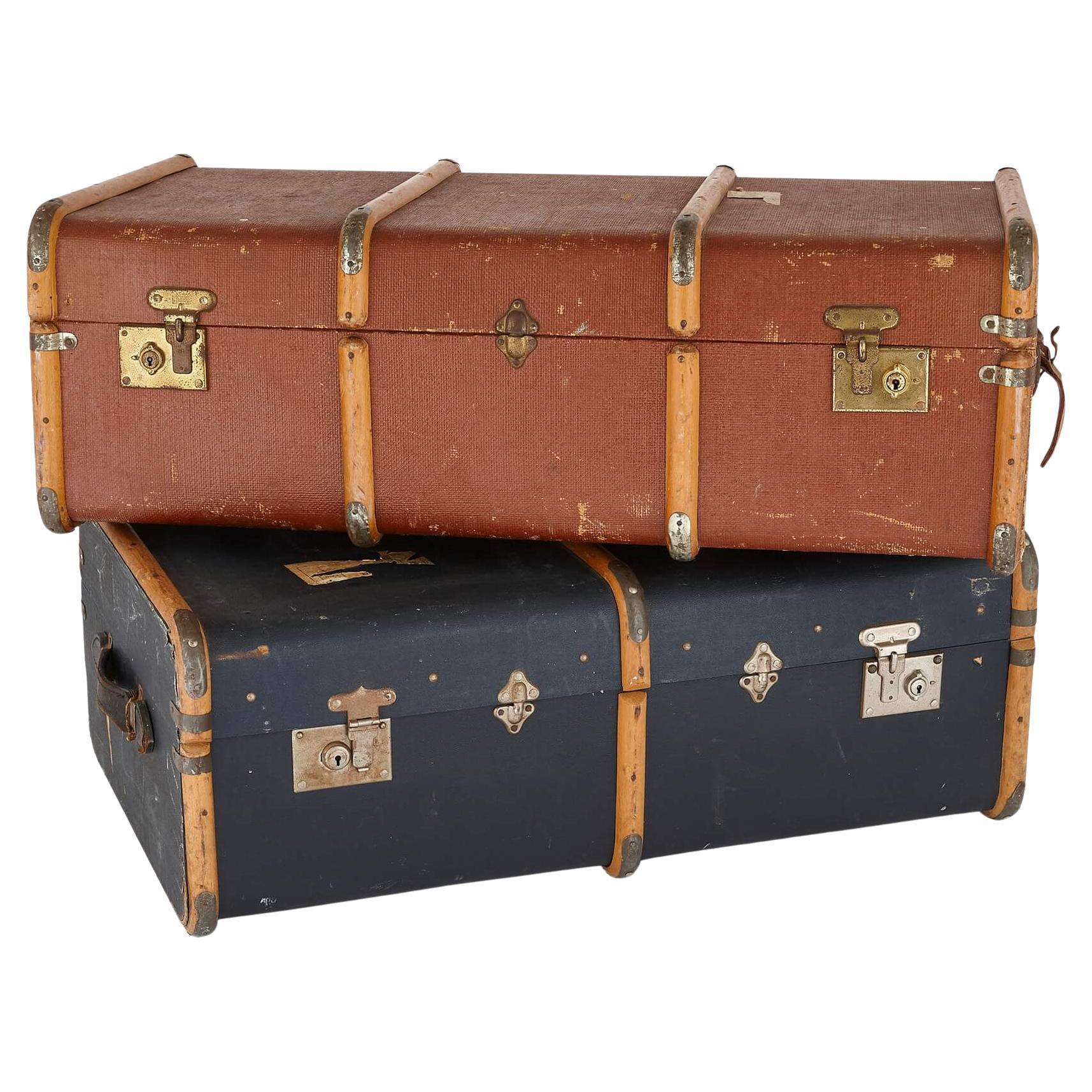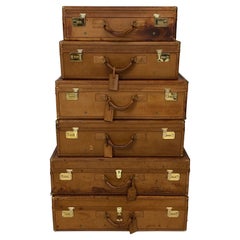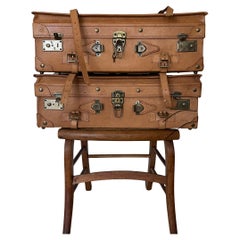Items Similar to 20th Century French Set of Four Suitcases, Leather and Ponyskin
Want more images or videos?
Request additional images or videos from the seller
1 of 6
20th Century French Set of Four Suitcases, Leather and Ponyskin
$2,635.92per set
£1,961.90per set
€2,200per set
CA$3,610.55per set
A$4,015.72per set
CHF 2,096.88per set
MX$48,866.98per set
NOK 26,780.38per set
SEK 25,115.27per set
DKK 16,747.83per set
Shipping
Retrieving quote...The 1stDibs Promise:
Authenticity Guarantee,
Money-Back Guarantee,
24-Hour Cancellation
About the Item
Elegant, quirky, eccentric set of four suitcases, made in France, leather
and ponyskin, initials V.M.L.
Dimensions :
1 x 60 x 40 cm x 17 cm high
1 x 70 x 45 cm x 19 cm high
2 x 80 x 50 cm x 22 cm high.
- Dimensions:Height: 8.67 in (22 cm)Width: 31.5 in (80 cm)Depth: 19.69 in (50 cm)
- Sold As:Set of 4
- Materials and Techniques:
- Place of Origin:
- Period:
- Date of Manufacture:1950s
- Condition:Wear consistent with age and use.
- Seller Location:Brecht, BE
- Reference Number:1stDibs: LU240338079673
About the Seller
4.9
Vetted Professional Seller
Every seller passes strict standards for authenticity and reliability
Established in 1994
1stDibs seller since 2016
222 sales on 1stDibs
Typical response time: 4 hours
- ShippingRetrieving quote...Shipping from: Brecht, Belgium
- Return Policy
Authenticity Guarantee
In the unlikely event there’s an issue with an item’s authenticity, contact us within 1 year for a full refund. DetailsMoney-Back Guarantee
If your item is not as described, is damaged in transit, or does not arrive, contact us within 7 days for a full refund. Details24-Hour Cancellation
You have a 24-hour grace period in which to reconsider your purchase, with no questions asked.Vetted Professional Sellers
Our world-class sellers must adhere to strict standards for service and quality, maintaining the integrity of our listings.Price-Match Guarantee
If you find that a seller listed the same item for a lower price elsewhere, we’ll match it.Trusted Global Delivery
Our best-in-class carrier network provides specialized shipping options worldwide, including custom delivery.More From This Seller
View AllEarly 20th Century Vellum Suitcase
Located in Brecht, BE
charming suitcase, from the 1920's
Category
Early 20th Century French Trunks and Luggage
Materials
Leather
19th Century French Chest of Drawers
Located in Brecht, BE
Found in the South West of France, this unique chest of drawers was made in
poplarwood and hazelnut twig.
Category
Antique Late 19th Century French Commodes and Chests of Drawers
Materials
Twig, Poplar
19th century Spanish 4doors cabinet ...
Located in Brecht, BE
a unique piece of furniture, 4doors cabinet from the Pyrenees region in the north of Spain ... lovely sculpted panels ... pure and genuine as I love ...
Category
Antique Mid-19th Century Spanish Cabinets
Materials
Chestnut, Oak
19th century Italian cabinet ...
Located in Brecht, BE
love the patina on this twodoors Italian poplarwood cabinet, a genuine piece of furniture, original paint ...
Category
Antique Mid-19th Century Italian Cabinets
Materials
Poplar
19th century French folk art buffet
Located in Brecht, BE
a lovely example of 19th century folk art buffet,
made in the French Alps, pinecones on oak, great patina and in very good vintage condition, very well preserved, completely genuine.
Category
Antique Late 19th Century French Buffets
Materials
Oak
18th century French chest of drawers ...
Located in Brecht, BE
a gorgeous 18th century French fruitwood chest of drawers, small proportions and with quirky feet, great design that ca...
Category
Antique Mid-18th Century French Commodes and Chests of Drawers
Materials
Fruitwood
You May Also Like
Vintage Set of 6 Leather Suitcases of the Greek Brand WINGS
Located in Schellebelle, BE
Elegant set of 6 leather suitcases,
By the Greek brand WINGS,
All with great,good old used patina of the leather,
can be used as decoration items in a Dressing room or Library
Differ...
Category
Vintage 1960s European Trunks and Luggage
Materials
Leather
Antique Leather Suitcases Pair Storage Trunks
Located in Boca Raton, FL
Pair of antique leather suitcases in great condition- probably they were used just for storage and nog for travel, - that’s why the handles are missing. Great decorative and storage ...
Category
Vintage 1920s American American Classical Decorative Boxes
Materials
Leather
$760 Sale Price / set
20% Off
Collection of Vintage Luggage, a Set of Four English Travel Cases
Located in London, GB
Collection of vintage luggage, a set of four English travel cases.
English, 20th Century
Green: height 18cm, width 67cm, depth 38cm.
Tan: height...
Category
20th Century English Modern Trunks and Luggage
Materials
Leather
Stacked Set of Five Antique Leather Suitcases or Trunks
Located in Redding, CT
Stacked Set of 5 Antique Leather Suitcases or Trunks. If these suitcases could talk. The stories they would tell. Well worn and loved these leather suitca...
Category
Antique 19th Century American Classical Trunks and Luggage
Materials
Metal
Spanish Leather Suitcases as Side Table
Located in Barcelona, ES
Beautiful set of two brown leather suitcases placed as side / end table, Spain, 1930s.
They have leather handles and metal hardware.
The small one is a travel suitcase with a gentleman vanity...
Category
20th Century Spanish Art Deco Trunks and Luggage
Materials
Metal, Chrome
$2,390 / set
Pair of Large Vintage English Travel Cases Made by Frenchs
Located in London, GB
Pair of large vintage English travel cases made by Frenchs.
English, 20th Century.
Blue case: height 31cm, width 84cm, depth 51cm.
Red case: height 32cm, width 90cm, depth 51cm.
Dating to the early twentieth century, these intriguing pieces are a pair of large, antique travel cases...
Category
20th Century English Modern Trunks and Luggage
Materials
Leather, Wood
More Ways To Browse
Black Leather Luggage
Retro Suitcase Set
Vintage Leather Suitcase 1950s
Suitcase Stand
Antique Trunk Leather Straps
Wardrobe Steamer Trunk
Antique Trunk Nails
Danish Trunk
Goyard Trunk
Metal Steamer Trunk
Antique Spanish Trunk
Antique Swedish Trunks
German Trunks Antique
Louis Vuitton Trunk 1910
Antique Flat Top Trunk
Antique Military Trunk
Antique Trunks 1800S
Louis Vuitton Trunk 1920s
